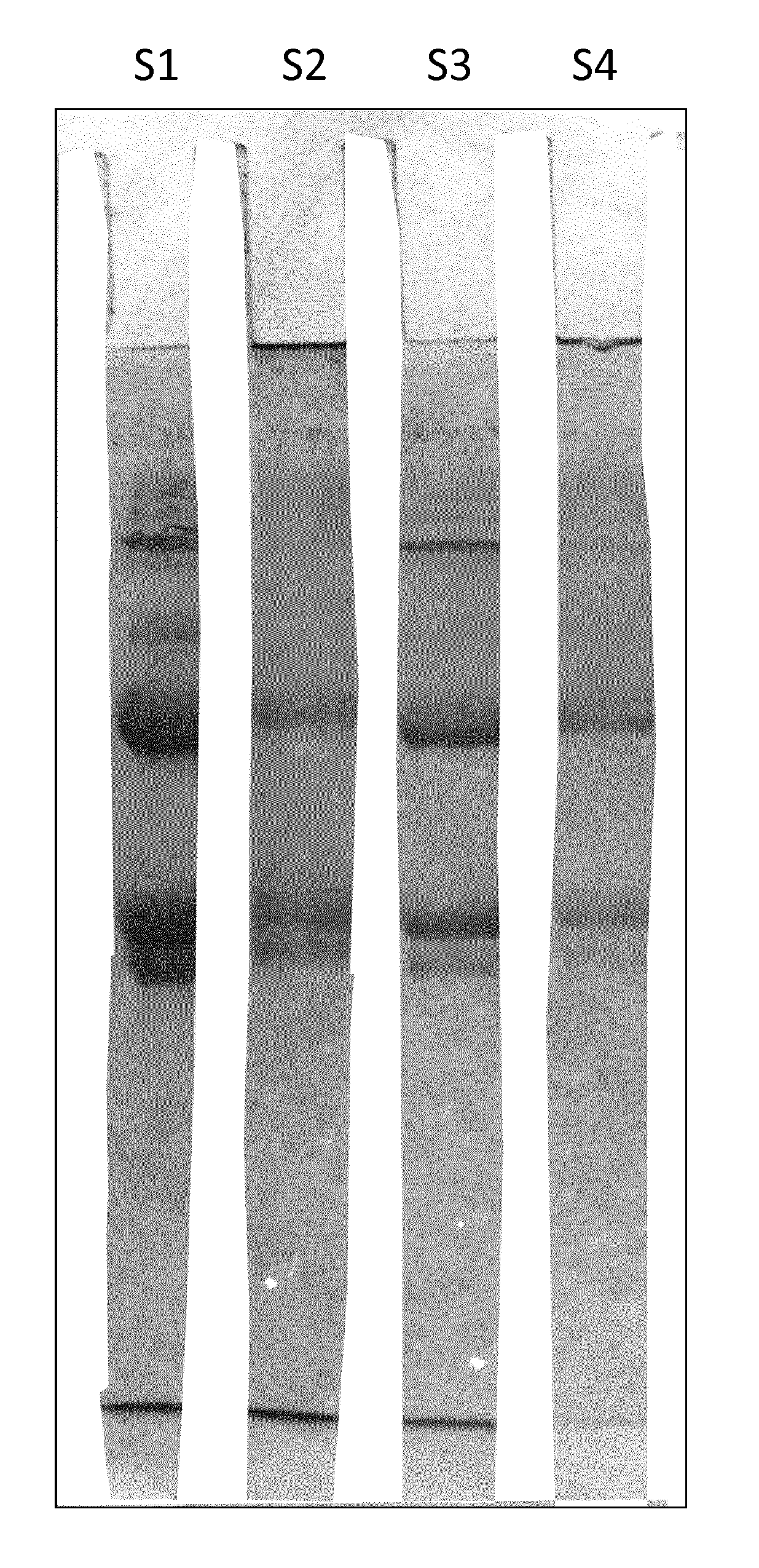Hemostatic compositions
a composition and composition technology, applied in the field of hemostatic compositions, can solve the problems of excessive swelling, low or no hemostatic effect in a certain number of cases, undesirable pressure, etc., and achieve the effect of good hemostatic properties and limited swelling
- Summary
- Abstract
- Description
- Claims
- Application Information
AI Technical Summary
Benefits of technology
Problems solved by technology
Method used
Image
Examples
example 1
Protocol for Measuring Density
[0235]The product to be tested (600 mg), in particular in powder form, is introduced into a 5 mL graduated cylinder. The height of the product is measured and the corresponding volume is noted. The measurement is repeated three times. The product is then packed three times by tapping the tube 100 times on a hard surface. The height of the product and the corresponding volume are measured again. The densities of the product before and after packing, called bulk density and tapped density, respectively, are thus obtained.
example 2
Protocol for Measuring Hemostatic Capacity In Vitro
[0236]Citrated (around 0.1 M) human blood is maintained at 37° C. in a water bath throughout the measurement. The product to be tested (10 mg) is deposited in a 5 mL polypropylene tube with a snap-on cap, and then citrated fresh blood (2 mL) is added. CaCl2 is then added so that the final CaCl2 concentration in the blood is 15 mM, and then the test tube is closed. The contents are then around mixed by vigorous inversions (10 times) and then the test tube is plunged into the water bath; the test tube is returned to the vertical position every 10 seconds. The time required to form a clot is noted and corresponds to hemostatic capacity.
example 3
Protocol for Measuring Particle Size
[0237]A known quantity of product, notably of powder, is sifted through 50 μm, 100 μm, 200 μm, 300 μm and 400 μm screens for 2 minutes (per screen). The fractions from each screen are weighed. The proportion of each granulometry range is determined.
PUM
| Property | Measurement | Unit |
|---|---|---|
| weight ratio | aaaaa | aaaaa |
| weight ratio | aaaaa | aaaaa |
| weight ratio | aaaaa | aaaaa |
Abstract
Description
Claims
Application Information
 Login to View More
Login to View More - R&D
- Intellectual Property
- Life Sciences
- Materials
- Tech Scout
- Unparalleled Data Quality
- Higher Quality Content
- 60% Fewer Hallucinations
Browse by: Latest US Patents, China's latest patents, Technical Efficacy Thesaurus, Application Domain, Technology Topic, Popular Technical Reports.
© 2025 PatSnap. All rights reserved.Legal|Privacy policy|Modern Slavery Act Transparency Statement|Sitemap|About US| Contact US: help@patsnap.com

